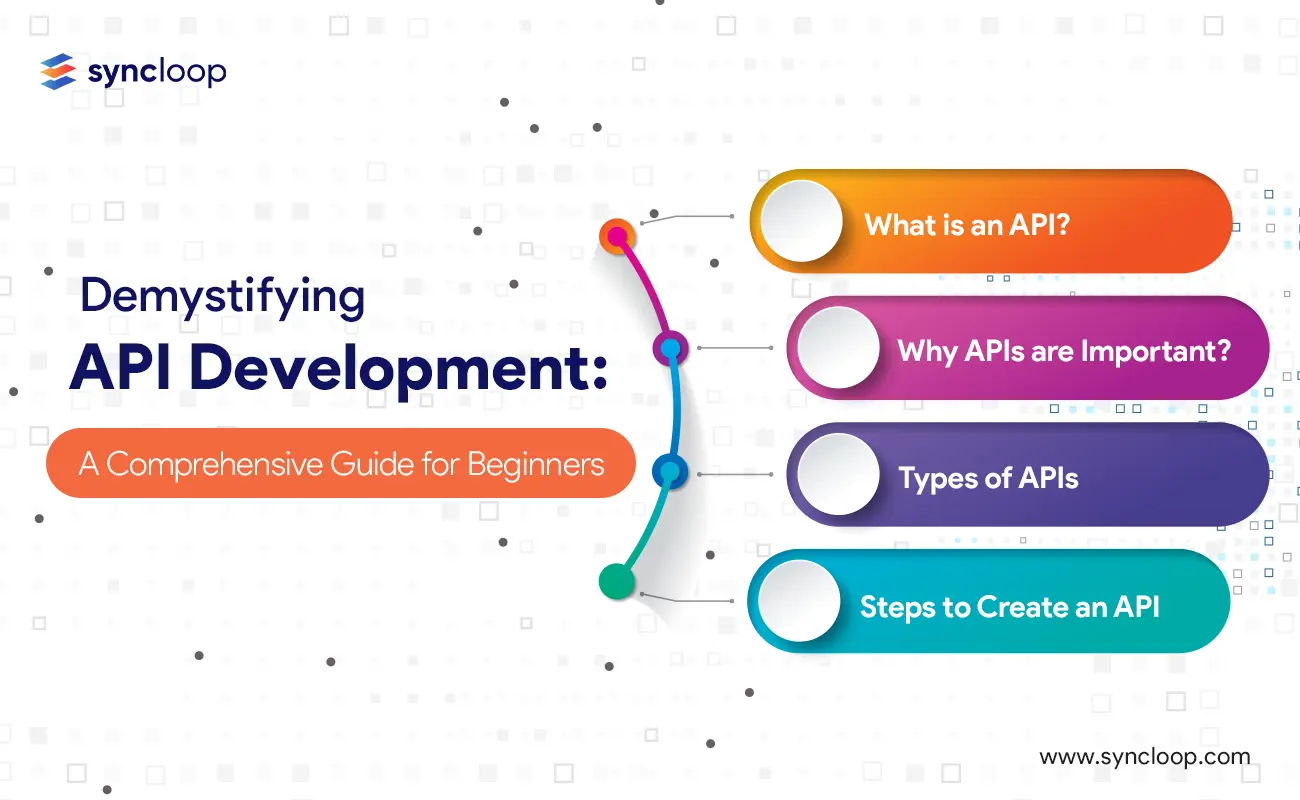Demystifying API Development: A Comprehensive Guide for Beginners
Posted by: Muheet | May 01, 2024

Categories: API, API development, RESTful APIs
"As technology continues to evolve", APIs (Application Programming Interfaces) have become an integral part of modern software development. But for beginners, the concept of API making can seem complex and intimidating. In this comprehensive guide, we will break down the fundamentals of API making, making it easy for beginners to understand and get started.
What is an API?
At its core, an API is a set of rules and protocols that allow different software applications to communicate with each other. API calls act as intermediaries, enabling data and functionality to be shared and integrated across different platforms, systems, or applications. APIs are the foundation of modern software development, enabling seamless integration and interoperability between different technologies.
Why APIs are Important
APIs offer numerous benefits for developers, businesses, and users alike. They allow developers, tech leaders and tech architects to leverage existing functionalities and data from other applications, saving time and effort in building new features. Businesses can expand their reach by providing APIs for external developers to build on top of their platform, creating new revenue streams and fostering innovation. Users benefit from the seamless integration of different applications, providing a seamless and user-friendly experience.
Types of APIs
There are different types of APIs, each serving a specific purpose:
- RESTful APIs: Representational State Transfer (REST APIs) is a common architectural style used for designing networked applications. RESTful APIs use HTTP methods (such as GET, POST, PUT, DELETE) to perform operations on resources represented by URLs. RESTful APIs are widely used and popular for their simplicity and scalability.
- SOAP APIs: Simple Object Access Protocol (SOAP) is a protocol used for exchanging structured information in the implementation of web services. SOAP APIs use XML-based messages to send and receive data, making them more complex and heavyweight compared to RESTful APIs.
- GraphQL APIs: GraphQL is a query language for APIs developed by Facebook. GraphQL APIs allow clients to request only the data they need, reducing over-fetching or under-fetching of data. GraphQL APIs provide more flexibility and efficiency in data retrieval compared to RESTful APIs.
Steps to Create an API
Creating an API involves several steps, including:
- Define the API's purpose: Clearly define the purpose, functionality, and endpoints of the API. Consider the intended audience, data format, authentication, and security requirements.This step is crucial to create anyl API that will be effective and useful for developers, businesses, and users
- Design the API: Choose the appropriate API design pattern (such as RESTful, SOAP, or GraphQL), and define the data models, endpoints, and operations. Consider factors like error handling, versioning, and documentation.
- Develop the API: Implement the API using a programming language or framework of your choice. Define the request and response formats, handle authentication, implement business logic, and validate inputs. Using a reliable and efficient API development platform or API development portal can simplify this step and ensure that your RESTful API is well-designed and well-implemented.
- Test the API: Thoroughly test the API using different scenarios and edge cases. Verify the functionality, performance, and security of the API. Fix any issues or bugs identified during testing.
- Document the API: Provide comprehensive documentation for the API, including the endpoints, parameters, data formats, authentication, error handling, and usage examples. Clear and detailed documentation is crucial for developers to understand and use the API effectively.
Syncloop's API-Developement Platform
Conclusion:
For beginners and experienced developers alike, Syncloop's API-making platform offers a visual and user-friendly experience in API development. With features like an advanced user experience-based mapper, conditional mapping, and easy export/import for custom migration, Syncloop simplifies the process of creating APIs for applications. The platform also offers scheduling services, built-in promotion management, and CI/CD for quick deployment, making it a convenient and efficient solution for API development.
Back to Blogs

